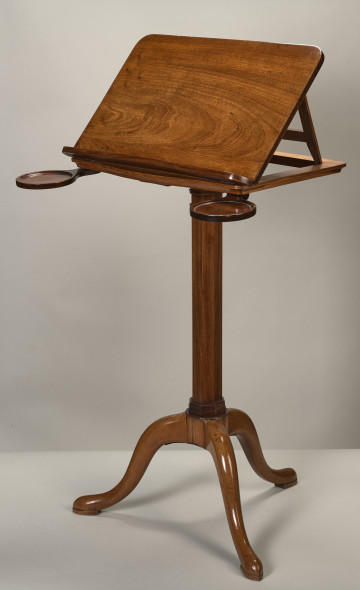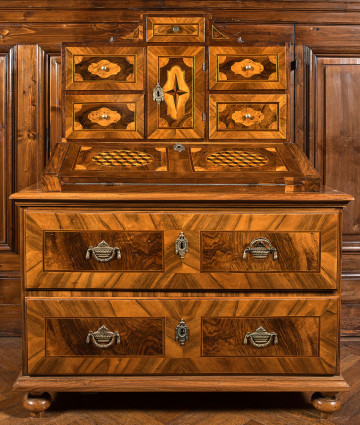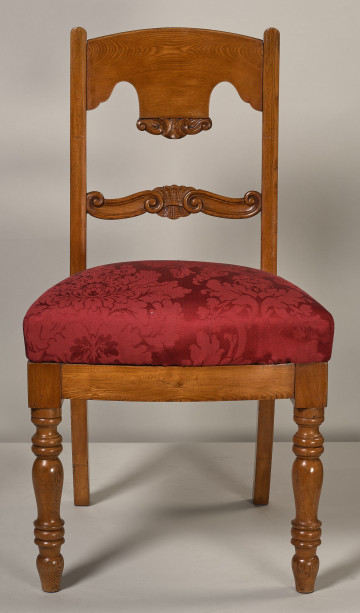
Wooden desktop
18th-19th century
Castle Museum in Łańcut
Part of the collection: Furniture and interior furnishings
Folding screen. Folding screen usually consists of several articulated wings. This piece of furniture serves as a movable wall used to cover or enclose a given space. It is one of the most functional and handy appliances used in residential interiors. Its Polish name parawan comes from the Italian para vento, meaning protection against the wind. The French borrowed this term and popularised it under the name paravent meaning a screen. In Europe, folding screens were most popular in the 18th and 19th centuries. The first such screens were manufactured in China, from where they found their way to Japan. In Europe, these pieces of interior probably appeared in the 16th century, when the expeditions of explorers and merchants inspired European fascination with the Far East. As a result of the interest in the broadly understood culture of China and Japan, the demand for Far Eastern handicrafts was increasing. They were highly desirable but expensive. This is why their imitation flourished in Europe, as can be seen on the example of this piece of furniture, made in the likeness of Chinese screens, usually more massive than the Japanese ones. It comes from the Łańcut collection that once belonged to the Potocki family. The black lacquered wings of the furniture are decorated with shimmering views in several gradations of gold with a motif of garden gazebos and vegetation. Teresa Bagińska-Żurawska https://orcid.org/0000-0002-9243-3967
Author / creator
Dimensions
height: 217 cm, width: 224 cm
Object type
Furniture and interior fittings
Technique
installation
Material
wood, lacquer
Creation time / dating
Creation / finding place
Owner
Castle Museum in Łańcut
Identification number
Location / status

18th-19th century
Castle Museum in Łańcut

18th century
Castle Museum in Łańcut

19th (?) century
Castle Museum in Łańcut
DISCOVER this TOPIC
National Museum in Lublin
DISCOVER this PATH
Educational path